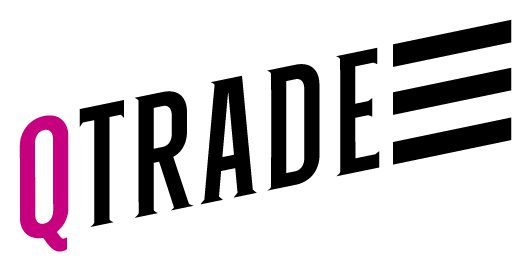
To make money on the stock market, you must purchase stock when it’s undervalued and you sell it when it’s overvalued. The key is to know how to identify inexpensive stocks that you can sell for a higher price. Although all imperfect, valuation ratios will help you determine whether a company is undervalued or overvalued. Most online brokers provide resources that help you to analyze the companies' valuation ratios. You can quickly find these resources on an online broker comparison tool. Here are the six valuation ratios that you absolutely must know.
The price/earnings ratio (P/E)
The price/earnings ratio (P/E) is by far the most widely known valuation ratio. It indicates how many years it will take for the profits of the business to cover the purchase price of the business.
In terms of its calculation, the price/earnings ratio is a company’s market capitalization divided by its net earnings. It can also be calculated by taking the price of a share divided by the net income per share. The lower the price/earnings ratio, the cheaper the business will be. Conversely, the higher the price/earnings ratio, the more expensive the business will be.
Typically, a business with a P/E ratio less than 10 is considered inexpensive. A P/E ratio less than 10 may reflect the fact that the market considers this company to be risky or in decline. A company with a ratio between 10 and 20 is average. Lastly, a business with a ratio greater than 20 is considered expensive. High growth companies often have P/E ratios above 20, which reflects the fact that the market expects strong earnings growth over the next several years.
Not all industries and business models are created equal. Therefore, investors don’t value all companies’ profits in the same way. For example, in the automotive sector, you can find the P/E ratios for Toyota, Ford and Tesla on the Hardbacon app. You can quickly see if Tesla's stock seems correctly evaluated compared to its competitors. On a related note, another approach is to compare the P/E ratio of the company you are interested in with the average P/E ratio of companies in an index (the S&P 500, for example).
Finally, you should understand that the P/E ratio is not a magic indicator. Just because you buy stocks with a low P/E ratio doesn't mean you're going to earn a return. One of the P/E ratio’s shortcomings is that it takes into account the company's current price (an indicator linked to the present) and annual net profit (an indicator linked to the past, i.e. the previous year). However, you can never know if a company’s past results will be repeated in the future. The P/E ratio could therefore give you a signal to buy, while profits may collapse in the quarter or year following your purchase.
The price-to-book value
The price-to-book ratio (P/B ratio) indicates how much you’ll pay for a company’s net assets. In reality, this is the company’s market capitalization divided by its book value. This book value can be obtained by subtracting the amount of a company's debts from its tangible assets, such as buildings, equipment and other assets with resale value.
A low price-to-book ratio means that the business is cheap for the amount of assets held. Conversely, if the price-to-book ratio is high, it means that the business is expensive for the amount of net assets held.
We mainly use the price-to-book ratio to evaluate a business in decline or making a loss. For example, a price-to-book ratio below 1 means that a buyer could make money buying the business as a whole, and selling its parts.
Keep in mind that this ratio is not useful for valuing companies whose core assets are intangible, such as technology companies or service companies.
The price-to-sales ratio
The price-to-sales ratio (P/S) indicates how much you will pay for the sales made by the company. This ratio can be calculated by dividing a company's market capitalization by its annual sales.
The price-to-sales ratio can be very useful in valuing a loss-making company because the price-to-earnings ratio is impossible to calculate in the absence of earnings.
Today there are many companies that don’t generate profits because they’re experiencing financial difficulty or because they’re investing heavily in their growth. This is the case with many companies in the technology sector. A good example of this phenomenon is Canadian company Shopify, based in Ottawa, which helps SMEs set up online stores. To determine whether or not you're paying a lot for Shopify, you could, for example, compare its P/S ratio to that of similar companies like Lightspeed POS and GoDaddy.
The forward price-to-earnings ratio
The forward price-to-earnings ratio is the enthusiastic little brother of the price-to-earnings ratio. Rather than dividing a company's market capitalization by last year's profits, we divide its market capitalization by the profits that analysts who follow the company expect the company to make the following year.
For example, if the analysts’ consensus is that Coca-Cola's earnings will double next year, Coca-Cola's forward price-to-earnings ratio will be half its price-to-earnings ratio. Therefore, the forward price-to-earnings ratio is especially useful for evaluating growing companies which are profitable, and which see their profitability increasing.
The PEG ratio
Once your price-to-earnings ratio has been calculated, you can calculate the PEG ratio. This is calculated by dividing the price-to-earnings ratio by the average expected growth rate of earnings over the next few years. The average earnings growth rate can be calculated based on analysts’ forecasts.
In reality, this ratio helps you to better assess fast-growing companies, for which the price/earnings ratio and even the forward price/earnings ratio don’t necessarily do them justice. With the PEG ratio, you place a value on earnings growth, not just the earnings of the previous or next year.
In general, if the PEG ratio is less than 1, the stock will be considered undervalued. So there is an investment opportunity. If the PEG ratio is greater than 1, then the stock will be considered overvalued.
Again, the PEG ratio should be used with caution, as it relies on the analysts' forecasts coming true.
The price/enee cash flow ratio
The price-to-free cash flow ratio compares a company’s stock market price to the free cash generated during the previous year. In a way, it’s the skeptical cousin of the price/earnings ratio, since the only difference is that the earnings are replaced by the free cash flow generated, which, according to many investors, is a better indicator of the company’s financial health than its profits.
In fact, while managers can disguise a drop in profitability, by underestimating depreciation or even billing at the opportune moment, cash flow does not lie. It’s the difference between the inflow and outflow of money, which is not really open to interpretation. For this reason, conservative investors prefer this indicator more.
For example, a low-profit company with a high cash flow will be in a very good position to pay dividends or make acquisitions, while a company reporting high profits but showing negative free cash flow may theoretically have to suspend the payment of its dividends or even go bankrupt.
So, the higher the price-to-free cash flow ratio, the more you’ll pay for a company's cash flow. It should also be noted that some companies will have a negative free cash flow when they invest in their growth.
Before investing in a company, make sure you’ve read the six things you should know about a company before investing in it. If you're new to investing, check out the article Getting started on the stock market.
If you liked this article, you’ll definitely like Hardbacon’s mobile app, which links to your banking and investing accounts, helps you plan your financial goals, budget, and invest better. The basic version of the app is free, but you can do more with Hardbacon Premium. As a loyal reader of our blog, you can get 10% off any Hardbacon Premium subscription. To take advantage of this promotion, use promo code BLOG10 when subscribing through our website.






















About The Author: Enguerrand Sueur
Enguerrand est analyste financier chez Hardbacon. Passionné de finances, il s’intéresse tout particulièrement à la gestion de portefeuille et à l’analyse de titres. Chez Hardbacon, il est responsable de la rédaction d’articles sur l’investissement. C’est également lui qui compile les listes d’actions et de FNB disponibles dans la section «Explorer» de l’application mobile de Hardbacon.
More posts by Enguerrand Sueur